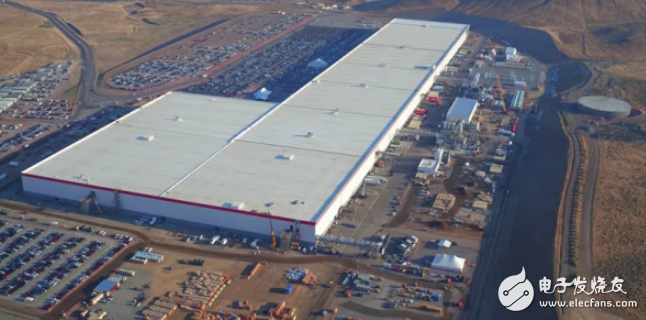Tesla's model 3 has not been delivered faithfully, and this has become a well-known thing. The official Tesla official said that Model 3 encountered a "capacity bottleneck" problem, but the specific reasons are not known. It was later confirmed that the biggest reason was because of the battery.
Panasonic CEO Kazuhiro Tsuga finally revealed to the outside world why Tesla failed to complete the Model 3 production target in the third quarter.

According to the news, Jin Heyi said at a financial conference that the time for the Tesla Super Battery Factory production line has been put into use has been delayed, which has affected the capacity of the Model 3. It is reported that some of the current Model 3 battery components require manual assembly by workers to complete.
Panasonic is a Tesla battery partner that helps the latter produce and assemble battery components at the super battery plant in the Sparks area of ​​Nevada.
Jin Heyi said: "The problem of the battery production line will be solved quickly, and the production of Model 3 will rise sharply." Of course, he did not specify how much the current production progress of Model 3 has been completed.
Tesla will release the company's latest quarterly earnings report on Wednesday, and the current Tesla representative declined to comment.
Tesla CEO Elon Musk said in August that the company plans to produce 1,500 Model 3 compact electric vehicles in September, while increasing production capacity to 20,000 units in December. However, in the end, Tesla produced only 260 Model 3s in the third quarter.
Tesla only said that Model 3 encountered a "capacity bottleneck" problem, but did not explain the specific reasons. Now, Jin Heyihong has confirmed that the main reason for the limited capacity of Model 3 is Tesla's super battery factory.
The Model 3 is an electric car from Tesla for mass consumers, starting at $35,000. As of August this year, Model 3's order volume has exceeded 455,000, and some of the booked consumers have to wait more than a year to get their own Model 3.
"Non-burning, nicotine for users, low tar content. As the heating temperature (below 500℃) is lower than the combustion temperature of traditional cigarettes (600-900℃), the harmful components produced by tobacco high-temperature combustion pyrolysis and thermal synthesis are reduced, and the release amount of side-flow smoke and environmental smoke (second-hand smoke) is also greatly reduced."
Heating non - combustion products are electronic devices containing tobacco. When you heat them, they produce a nicotine-containing vapor that you can inhale.
They are different from traditional cigarettes and work by heating tobacco to a very low temperature. Tobacco is heated to 350 ° C in a heat-incombustible device, while traditional cigarettes burn at up to 900 ° C.
Still, the temperature at which non-combustion products are heated is high enough to vaporize and inhale harmful chemicals.
Although both are electronic devices, heated non-combustible products are also different from e-cigarettes or steam devices. These usually use chemical liquids and do not necessarily contain nicotine. E-cigarettes tend to heat liquids to around 250 degrees Celsius to produce vapor.
Hnb Device Oem,Hnb Device Patent,Hnb Device,Hnb Device For Sale
Shenzhen MASON VAP Technology Co., Ltd. , https://www.e-cigarettefactory.com